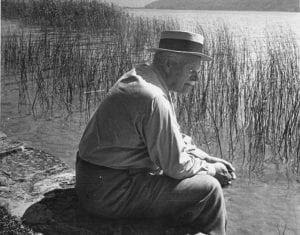Today we come to Frau Hauffe’s symptoms: peculiar mediumistic phenomena which really do not belong to the province of medicine, but rather to that of parapsychology.
I mention these phenomena, however, because they are part of the picture and therefore of psychological im- portance.
Although we should have a certain critical attitude towards such things, the facts ought to be respected and we should keep an open mind instead of closing it with theoretical prejudices.
The conditions of which I am about to speak are of a somnambulistic nature.
Somnambulism is an exceptional psychic condition; in the Clairvoyante it brought ab out a heightening of consciousness and Kerner tells us that she even became a poet.
She liked this living so to say on a higher story, it seemed •to her more normal than the usual waking condition.
Perhaps it really is more normal than the everyday point of view, but it cannot be held for any length of time, for it requires a great deal of energy.
If the Clairvoyante had been able to maintain this living on a higher level as a permanent condition, she would have been a super-woman.
Seeing visions is another of these phenomena; for instance, during three days she saw continually a mass of flames which ran through her whole body.
Such visions can sometimes be observed in ordinary neuroses and have a symbolic meaning.
Frau Hauffe also had the faculty of exteriorization, - she could see herself outside her own body, as if she were another person.
The first time this occurred, she saw herself sitting at her own bedside; this phenomenon is not only experi- enced by neurotics but also by people who are very ill or dying.
The eye symptoms which appeared at the beginning returned again later, the outer light was painful to her, so she concentrated on the inner light; she no longer looked out of the front door of the house but out of the back door, into the subjective world, and this led also to more positive manifestations of the unconscious.
She saw all manner of things which she projected into the outer world as ghost figures: ghosts which were connected with herself and ghosts connected with other people.
The ghosts represent their spiritual bodies, she sees people’s twofold nature, double so to speak, being aware not only of the side which is perceived through the senses, but also of their psychic personality. Carl Jung, Modern Psychology, Vol. 1, Page 32.

